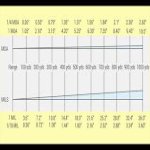Scott Bear
Regular
- Location
- Prince George
I'm shooting my .308 with a mil dot scope fixed 10X power and the turrets adjust in 1/4 moa clicks.
I would like to know how I aim for a 1000 yard target. As far as I can tell my bullet would drop about 367 inches or 10.19 mils. To bring the bullet up to the middle of the crosshairs (or move the crosshairs down to the POI) I would have to adjust the scope for 367 inches or 1,468 clicks which I don't think my scope can do. To use the bottom post I would still have to move the turret 734 clicks.
What am I missing?
I would like to know how I aim for a 1000 yard target. As far as I can tell my bullet would drop about 367 inches or 10.19 mils. To bring the bullet up to the middle of the crosshairs (or move the crosshairs down to the POI) I would have to adjust the scope for 367 inches or 1,468 clicks which I don't think my scope can do. To use the bottom post I would still have to move the turret 734 clicks.
What am I missing?









































































